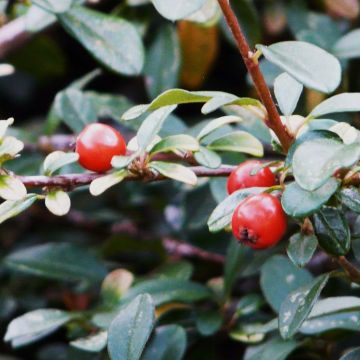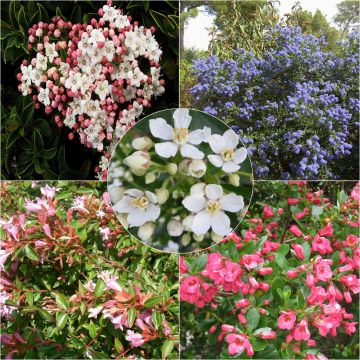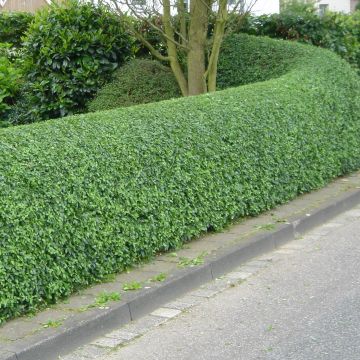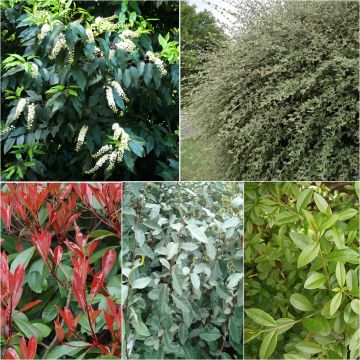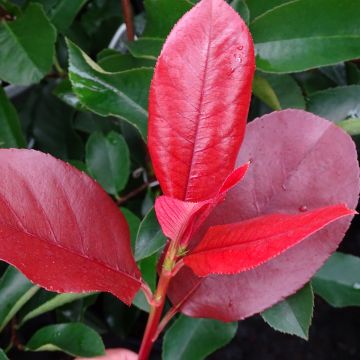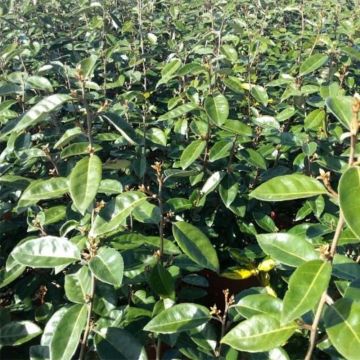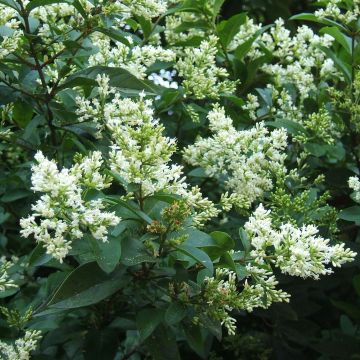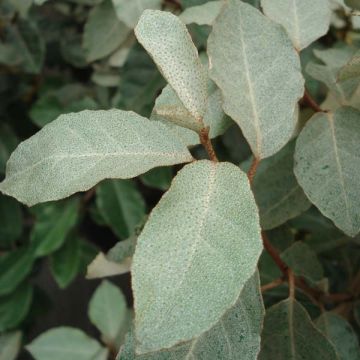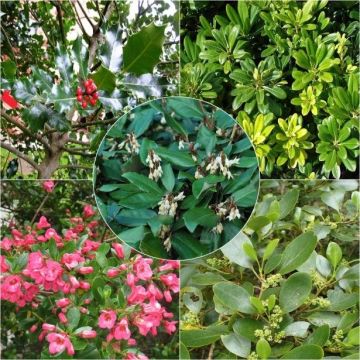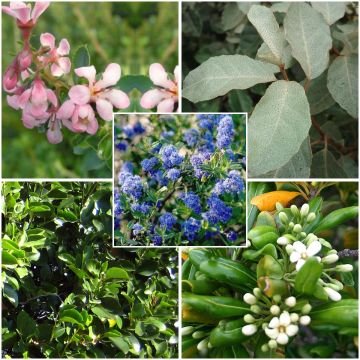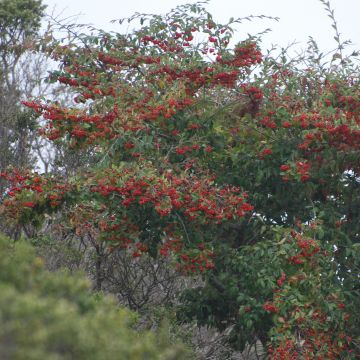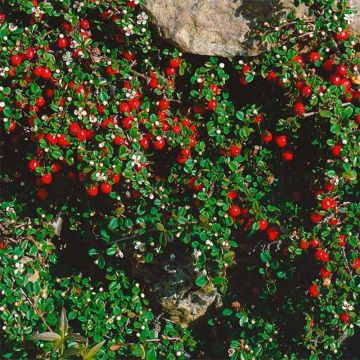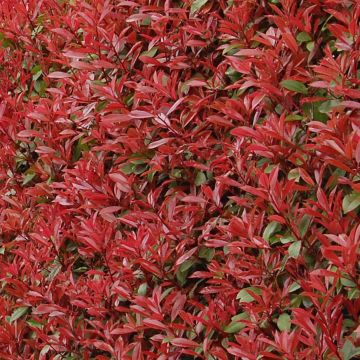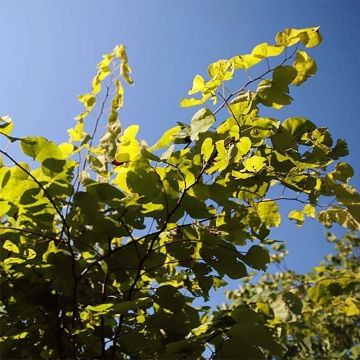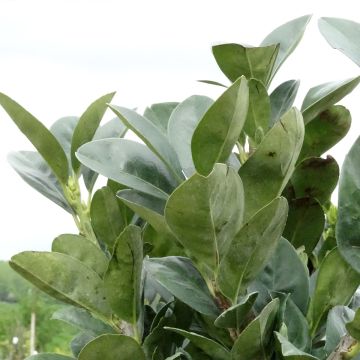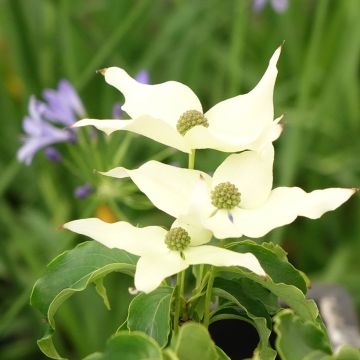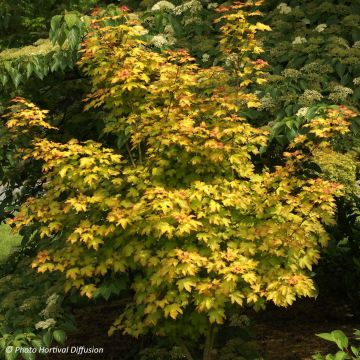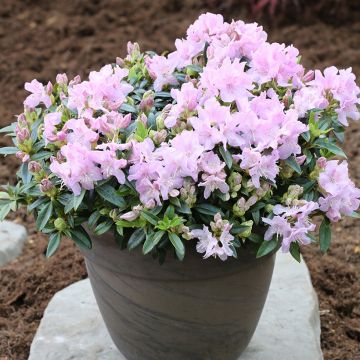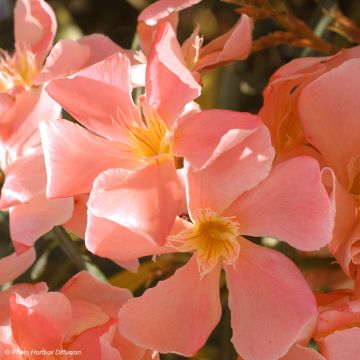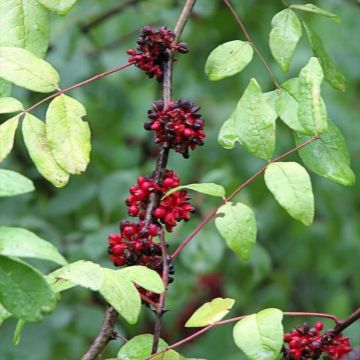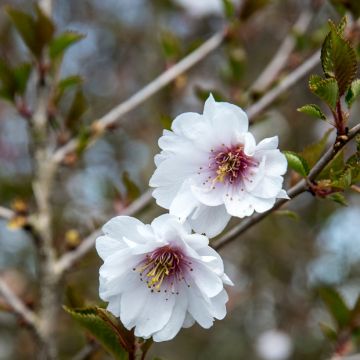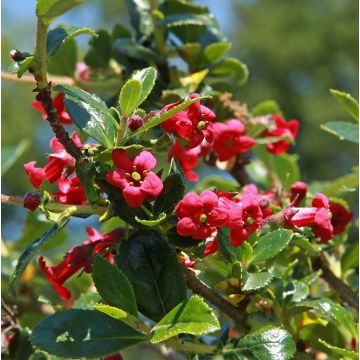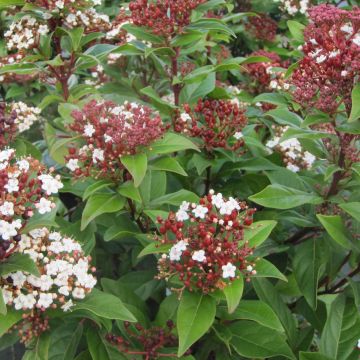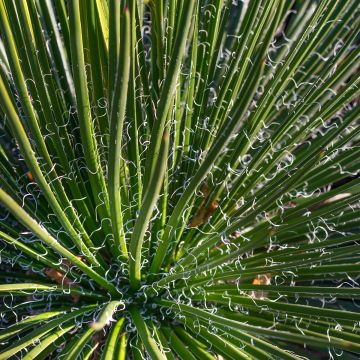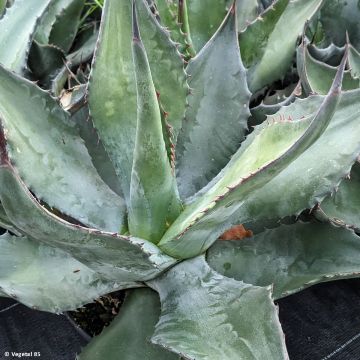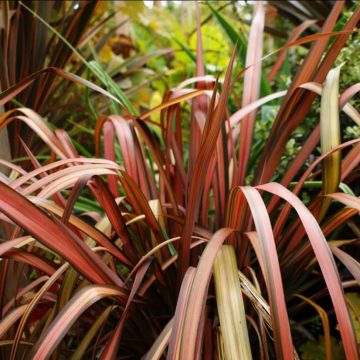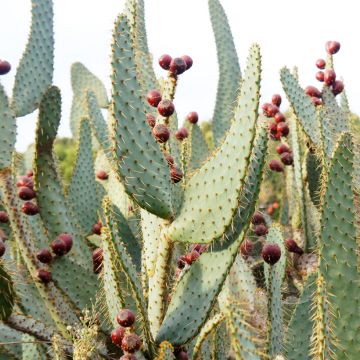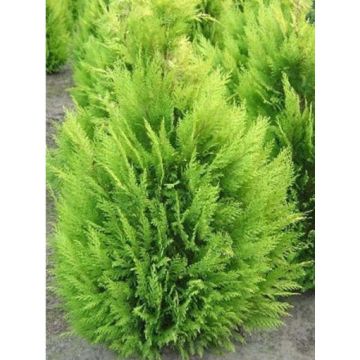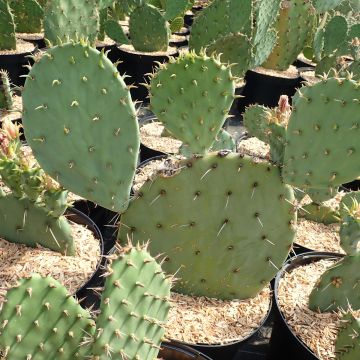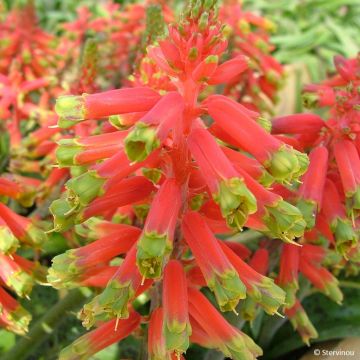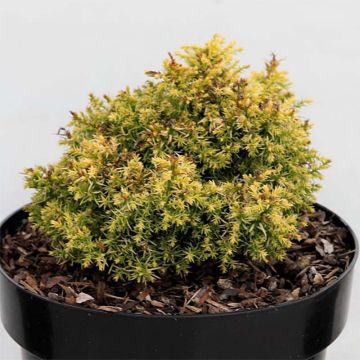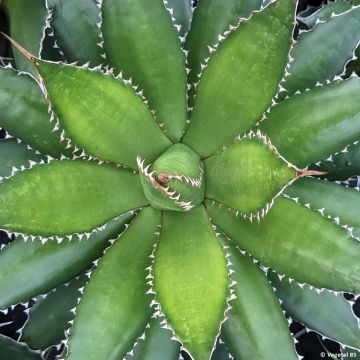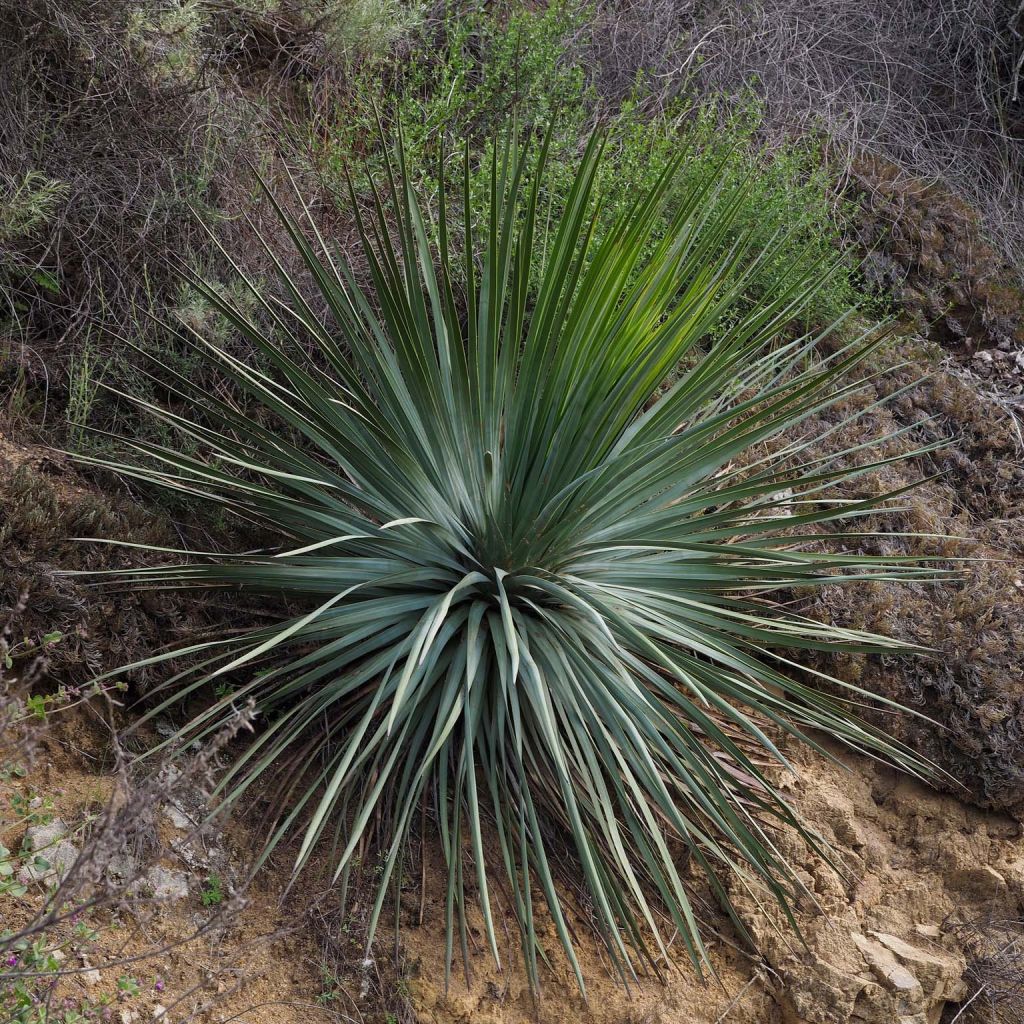

Yucca whipplei - Hesperoyucca bleu
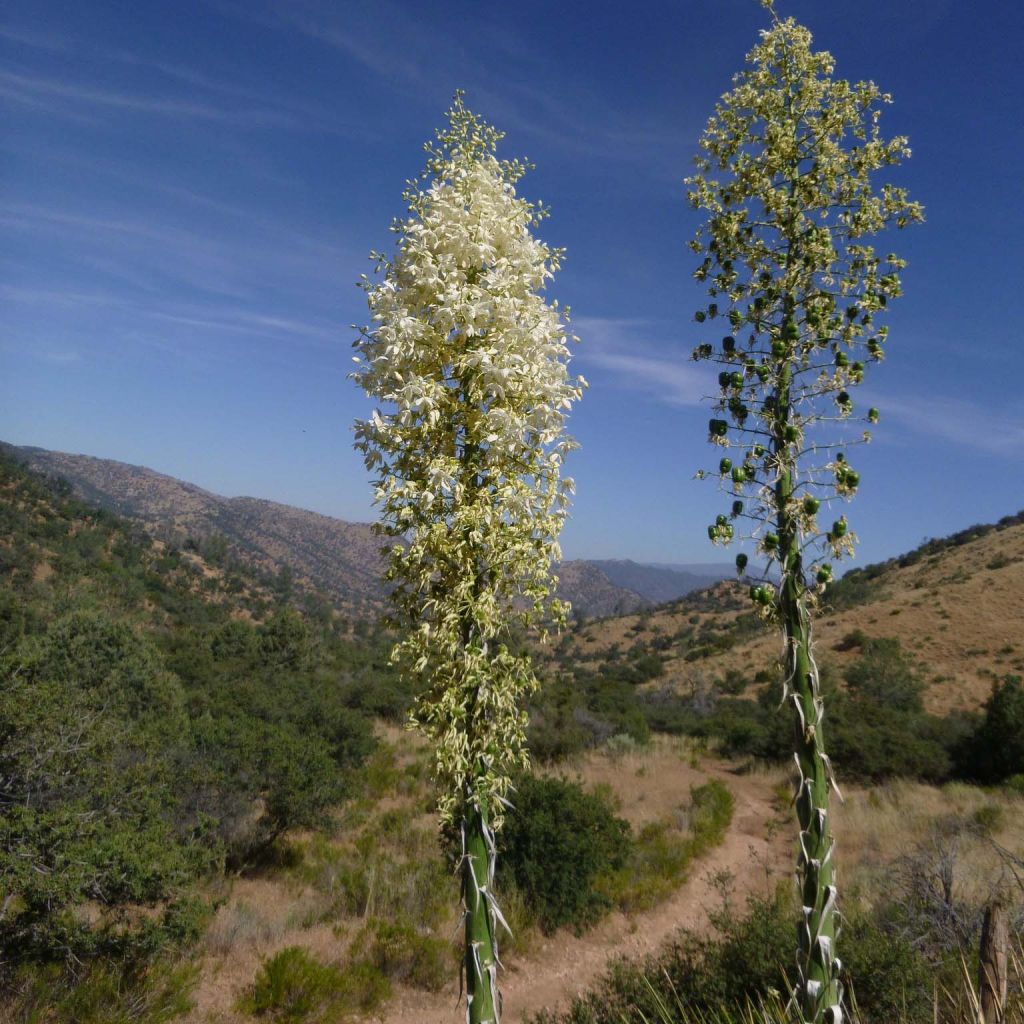

Yucca whipplei - Hesperoyucca bleu
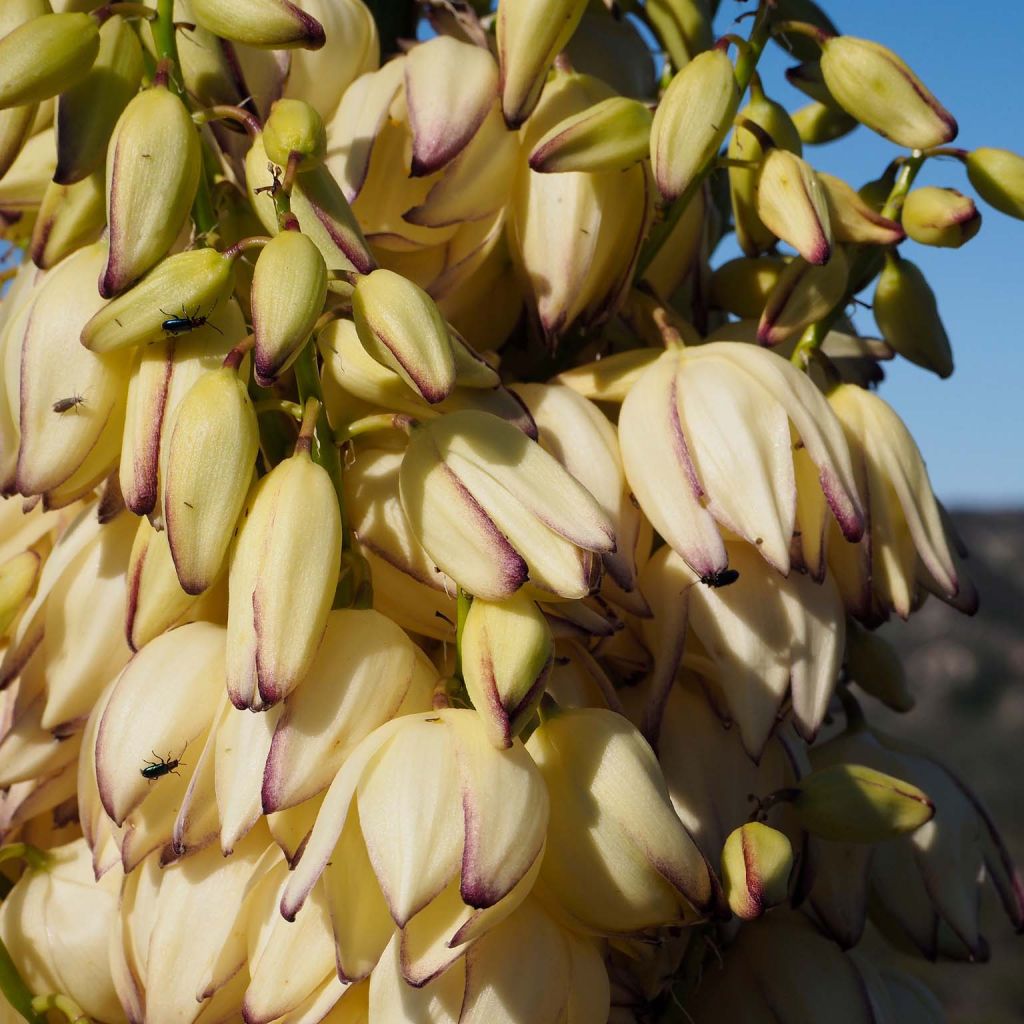

Yucca whipplei - Hesperoyucca bleu
Yucca whipplei
Yucca whipplei
Our Lord's Candle, Spanish Bayonet, Chaparral Yucca, Hesperoyucca
Why not try an alternative variety in stock?
View all →This plant carries a 24 months recovery warranty
More information
We guarantee the quality of our plants for a full growing cycle, and will replace at our expense any plant that fails to recover under normal climatic and planting conditions.
From €5.90 for pickup delivery and €6.90 for home delivery
Express home delivery from €8.90.
From €5.90 for pickup delivery and €6.90 for home delivery
Express home delivery from €8.90.
Does this plant fit my garden?
Set up your Plantfit profile →
Description
Yucca whipplei, sometimes called Hesperoyucca, is one of those quite extraordinary plants native to arid North American regions. Forming a dense yet graceful ball at ground level, adorned with long, tapered and stiff leaves, it eventually produces a unique yet spectacular flower spike. This spike is filled with numerous globular and waxy flowers, greenish on the outside and pendulous. This flowering marks the end of the life of the rosette, which ensures its longevity by developing numerous suckers. Reserve a prime location for this plant, which will bring an exotic colour and the breath of wide-open spaces to your decor. It excels in a dry garden or at the centre of a large rockery.
Native to the hills of California and Baja California, Hesperoyucca whipplei, just like evergreen ceanothus, is at home in the chaparral, a vegetation formation similar to scrubland. It is a low-altitude plant (from 0 to 300 m (0 to 984 ft)) that tolerates both long periods of drought and short freezes of about -15 °C (5 °F) at minimum temperature, in porous soil. It is a stemless rhizomatous plant belonging to the agave family, with rather slow growth, able to occupy more than 1 m (3 ft) of ground. Yucca whipplei forms a graceful, very dense ball, composed of numerous quite rigid leaves. Depending on the growing conditions, the leaves can reach 25 cm (10 in) to 1.15 m (4 ft) in length and 7 mm (1 in) to 2 cm (1 in) in width. They are linear, finely toothed along the edges, and end with a strong spine. Their colour is a soft greyish-greenish-blue. Flowering occurs after 5 years of growth, from June to August. In this species, the inflorescence is unique and emerges prominently from the mass of foliage. It rapidly develops at the top of a stalk measuring 3 m (10 ft) to 3.5 m (11 ft) in height and 70 cm (28 in) in width. Hundreds of bell-shaped flowers, about 3 cm (1 in) in diameter, open on this ramified panicle inflorescence. They are creamy white, washed with green or violet on the reverse side of the petals, and have a waxy texture. The fruit does not form in our temperate climates, in the absence of the plant's natural pollinator. It is a dry and winged capsule that splits open when ripe to release the seeds. The rosette of leaves dies after flowering, but new branches emerge at the base: this group of clones allows the plant to continue growing and reproducing.
In nature, Yucca whipplei often grows in the company of oaks and pines, on rocky hillsides with sparse woodland. In warm and dry regions, it can be showcased in the garden, emerging from rocks against a backdrop of evergreen foliage and prostrate shrubs like rosemary, creeping ceanothus, and kermes oak. It will find its place on a large arid slope, at the centre of an exotic or contemporary rockery, or even near a swimming pool, if the soil is well prepared to receive it. It is advisable to keep it slightly away from pathways and young children due to its sharp-pointed leaves. This plant will be simply magnificent as a standalone specimen, accompanied by a carpet of cerastium, Cerastostigma plumbaginoides, Delosperma, or even a dry meadow lawn such as Korean velvet grass (Zoyzia tenuifolia). It can also be combined with agaves, prickly pears, and hardy columnar cacti (Cleistocactus strausii, Cylindropuntia imbricata), as well as equally spectacular and frugal shrubby aloes. It can also be planted in a large pot on the terrace, accompanied by tall grasses, other yuccas, or a Cassia corymbosa, etc.
Report an error about the product description
Yucca whipplei in pictures
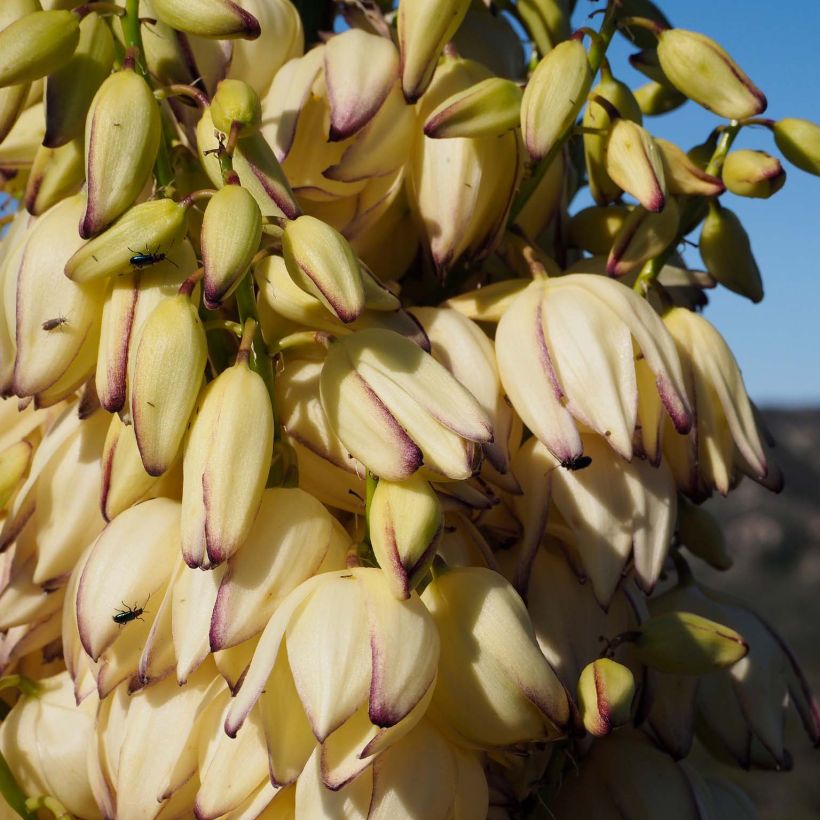

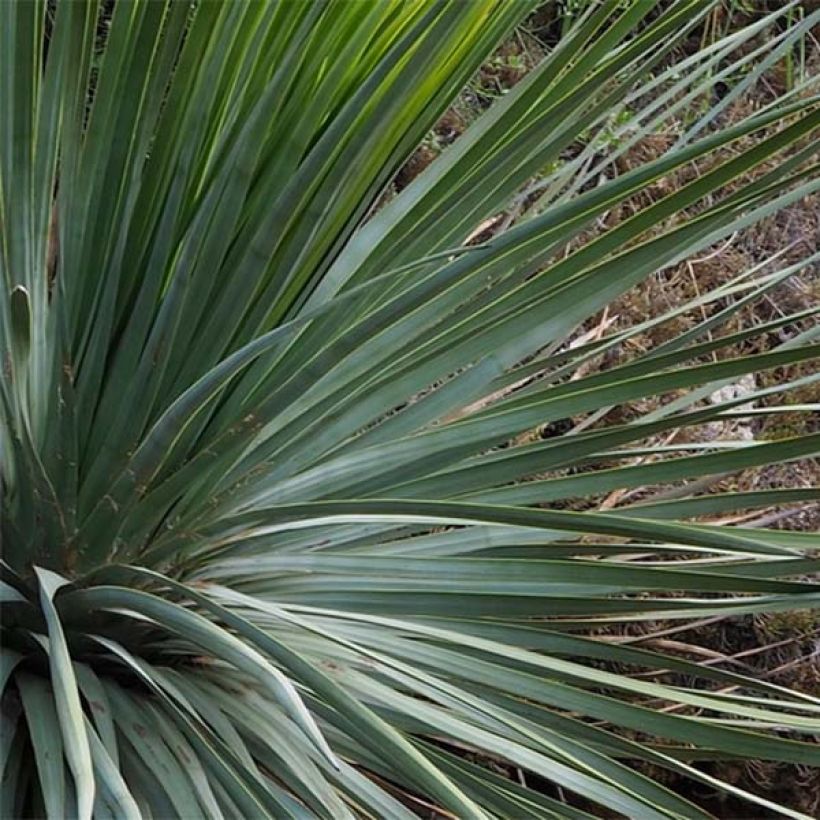

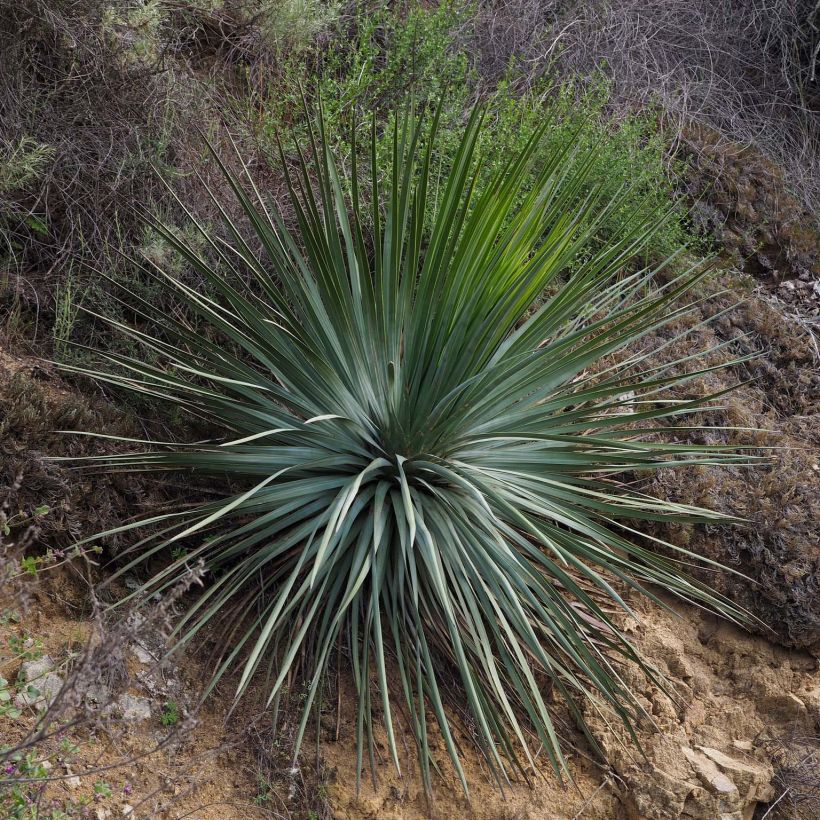

Plant habit
Flowering
Foliage
Botanical data
Yucca
whipplei
Agavaceae (Asparagaceae)
Our Lord's Candle, Spanish Bayonet, Chaparral Yucca, Hesperoyucca
North America
Other Shrubs A to Z
Planting and care
Plant Yucca whipplei in spring, in a very sunny and sheltered location if your garden is in a borderline hardiness zone. An adult specimen will withstand brief frosts of around -15 °C (5 °F), in well-drained soil. Its growth is quite slow, boosted by generous but spaced watering in summer and fertile soil. In mild climates, especially those that experience hot and dry summers, opt for autumn planting, This species fears heavy and clayey soils and humidity, especially when combined with cold: install the plant in very well-drained soil, ideally in a large rockery, a raised bed whose soil has been enriched with gravel, or a rocky slope. However, it is not very demanding regarding the soil pH, which can be slightly acidic, sandy, stony, or even slightly chalky. It tolerates poor soil, but its growth will be slightly faster in soil that is somewhat fertile. Monitor watering during the first 2 years, especially during hot and dry periods.
Fertilisation in yuccas:
In their countries of origin, Yucca flowers are pollinated only by a few species of tiny primitive butterflies without a proboscis that live in symbiosis with the plant, such as Prodoxus. The female of these butterflies carries pollen grains from one flower to the pistil of another. She lays a few eggs at the base of the flower. The young caterpillars feed on some of the seeds. Since Prodoxus is not part of our native fauna, most yuccas cultivated in our gardens never produce fruits. Only Yucca aloifolia is capable of doing so, because its pollination does not depend on the presence of these microbutterflies.
Planting period
Intended location
Care
This item has not been reviewed yet - be the first to leave a review about it.
Evergreen shrubs
Haven't found what you were looking for?
Hardiness is the lowest winter temperature a plant can endure without suffering serious damage or even dying. However, hardiness is affected by location (a sheltered area, such as a patio), protection (winter cover) and soil type (hardiness is improved by well-drained soil).

Photo Sharing Terms & Conditions
In order to encourage gardeners to interact and share their experiences, Promesse de fleurs offers various media enabling content to be uploaded onto its Site - in particular via the ‘Photo sharing’ module.
The User agrees to refrain from:
- Posting any content that is illegal, prejudicial, insulting, racist, inciteful to hatred, revisionist, contrary to public decency, that infringes on privacy or on the privacy rights of third parties, in particular the publicity rights of persons and goods, intellectual property rights, or the right to privacy.
- Submitting content on behalf of a third party;
- Impersonate the identity of a third party and/or publish any personal information about a third party;
In general, the User undertakes to refrain from any unethical behaviour.
All Content (in particular text, comments, files, images, photos, videos, creative works, etc.), which may be subject to property or intellectual property rights, image or other private rights, shall remain the property of the User, subject to the limited rights granted by the terms of the licence granted by Promesse de fleurs as stated below. Users are at liberty to publish or not to publish such Content on the Site, notably via the ‘Photo Sharing’ facility, and accept that this Content shall be made public and freely accessible, notably on the Internet.
Users further acknowledge, undertake to have ,and guarantee that they hold all necessary rights and permissions to publish such material on the Site, in particular with regard to the legislation in force pertaining to any privacy, property, intellectual property, image, or contractual rights, or rights of any other nature. By publishing such Content on the Site, Users acknowledge accepting full liability as publishers of the Content within the meaning of the law, and grant Promesse de fleurs, free of charge, an inclusive, worldwide licence for the said Content for the entire duration of its publication, including all reproduction, representation, up/downloading, displaying, performing, transmission, and storage rights.
Users also grant permission for their name to be linked to the Content and accept that this link may not always be made available.
By engaging in posting material, Users consent to their Content becoming automatically accessible on the Internet, in particular on other sites and/or blogs and/or web pages of the Promesse de fleurs site, including in particular social pages and the Promesse de fleurs catalogue.
Users may secure the removal of entrusted content free of charge by issuing a simple request via our contact form.
The flowering period indicated on our website applies to countries and regions located in USDA zone 8 (France, the United Kingdom, Ireland, the Netherlands, etc.)
It will vary according to where you live:
- In zones 9 to 10 (Italy, Spain, Greece, etc.), flowering will occur about 2 to 4 weeks earlier.
- In zones 6 to 7 (Germany, Poland, Slovenia, and lower mountainous regions), flowering will be delayed by 2 to 3 weeks.
- In zone 5 (Central Europe, Scandinavia), blooming will be delayed by 3 to 5 weeks.
In temperate climates, pruning of spring-flowering shrubs (forsythia, spireas, etc.) should be done just after flowering.
Pruning of summer-flowering shrubs (Indian Lilac, Perovskia, etc.) can be done in winter or spring.
In cold regions as well as with frost-sensitive plants, avoid pruning too early when severe frosts may still occur.
The planting period indicated on our website applies to countries and regions located in USDA zone 8 (France, United Kingdom, Ireland, Netherlands).
It will vary according to where you live:
- In Mediterranean zones (Marseille, Madrid, Milan, etc.), autumn and winter are the best planting periods.
- In continental zones (Strasbourg, Munich, Vienna, etc.), delay planting by 2 to 3 weeks in spring and bring it forward by 2 to 4 weeks in autumn.
- In mountainous regions (the Alps, Pyrenees, Carpathians, etc.), it is best to plant in late spring (May-June) or late summer (August-September).
The harvesting period indicated on our website applies to countries and regions in USDA zone 8 (France, England, Ireland, the Netherlands).
In colder areas (Scandinavia, Poland, Austria...) fruit and vegetable harvests are likely to be delayed by 3-4 weeks.
In warmer areas (Italy, Spain, Greece, etc.), harvesting will probably take place earlier, depending on weather conditions.
The sowing periods indicated on our website apply to countries and regions within USDA Zone 8 (France, UK, Ireland, Netherlands).
In colder areas (Scandinavia, Poland, Austria...), delay any outdoor sowing by 3-4 weeks, or sow under glass.
In warmer climes (Italy, Spain, Greece, etc.), bring outdoor sowing forward by a few weeks.

































